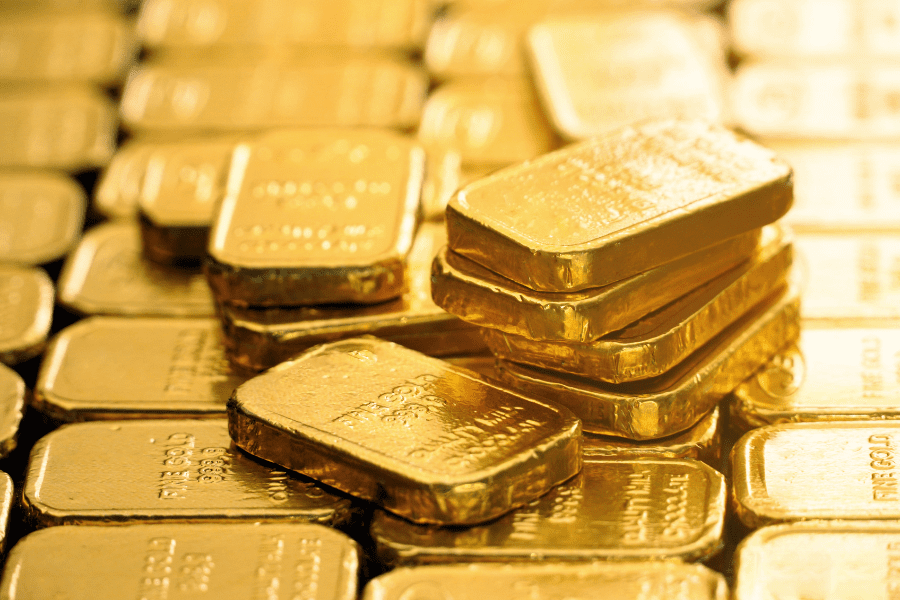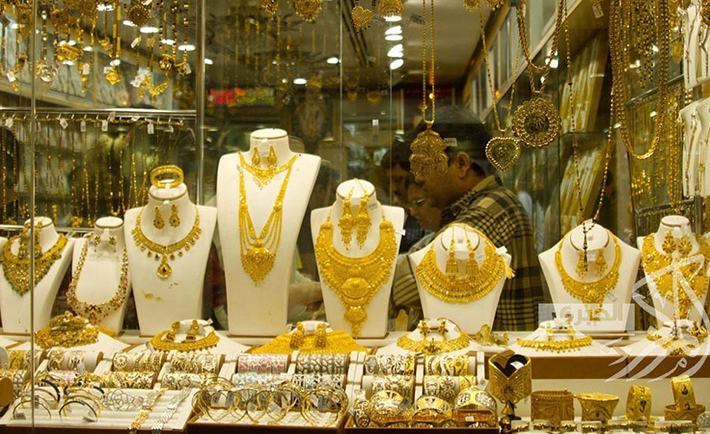The most thriving sector in the Saudi mining industry is gold, making Saudi gold and diamond jewelry highly sought-after items for visitors to Saudi Arabia and neighboring regions. Currently, the price of 24K gold in Saudi Arabia stands at SAR 243.46 per gram, presenting an attractive option for buyers. Several factors contribute to the affordability of Saudi gold.
Firstly, the country is tax-free or has minimal taxes on luxury goods like gold and diamonds. Additionally, Saudi Arabia possesses high-quality underground gold reserves, eliminating the need for expensive imports. The country boasts a vast and diverse mining potential valued at around $1.3 trillion, providing a robust foundation for the gold industry.
Also, with reasonable labor costs and a low 5% VAT rate, Saudi gold remains competitively priced. Moreover, significant investments in six gold and silver bullion factories further reinforce Saudi Arabia’s position as a key player in the gold market.
Exploring Varieties of Gold: Origins, Karats, and Unique Characteristics

| Type | Origin | Karat | Characteristics |
| Chinese Gold | China | 22 karats or more | China, a major global gold consumer and producer, often provides gold with a higher karat value. The perceived expense is influenced by the world’s low gold supply. |
| Italian Gold | Italy | 14 karats or 18 karats | Italian gold is highly sought after, known for its rich yellow color. Italian artisans, with centuries of expertise, contribute to the desirability of Italian gold among investors and collectors. |
| Turkish Gold | Turkey | 22 karats or higher | Dating back to 3000 BC, Turkish gold is esteemed for its high quality. With a variety of colors such as yellow, white, pink, and red, Turkish gold experiences high demand, especially during periods of low gold production. |
| Saudi Gold | Saudi Arabia | 21 karats or higher | Regarded as one of the most desirable types, Saudi gold boasts 21 karats or more. Renowned for intricate designs and carvings, Saudi gold holds appeal for jewelry investors, contributing to its coveted status. |
Understanding the Motivations Behind Gold Purchases
When contemplating the purchase of gold, it’s essential to identify the underlying reasons driving the decision, whether it be for jewelry, investment, or a combination of both. The choice significantly impacts considerations like carats, designs, and colors. Pure gold is denoted as 24 carats, representing 100% gold content.
Types of Gold and Considerations:
- Buying Gold for Jewelry:
- For exclusive jewelry purposes, opting for 18 or 21-carat gold suffices.
- 18-carat gold, comprising 75% gold and 25% other metals, provides durability for intricate designs due to the softness of pure gold.
- Considerations include the complexity of design, with 18-carat gold chains offering strength without excessive weight.
- Preferences for shine and color (e.g., bright yellow or less shiny white gold) influence the choice between 18 and 21-carat gold for jewelry.
- Buying Gold for Investment:
- Many gold shops in KSA offer gold coins and bars, primarily in 24-carat gold, with some reaching a purity standard of 999.9.
- Gold bars or coins, ranging from 1 gram to 1 kg, are potential investments. Investors can await price increases to sell for a profit or secure gold as a stable, liquid investment.
- Internationally recognized brands, like Valcambi and PAMP, issue gold bars. Middle Eastern jewelry brands may also provide branded bullion coins and bars.
- Buying Gold for Both Jewelry and Investment:
- For those aiming to combine jewelry and investment, experts suggest considering 21 or 22-carat gold.
- Minimal or no stones in the design are recommended, as the focus is on gold purity and weight.
- Prices may vary based on design origin, with Saudi or Bahraini designs typically more affordable than Indian or Italian ones.
- During resale, irrespective of design intricacies, the primary considerations are the final weight and purity of the gold.
Tips To Buy Gold From Saudi Arabia

Monitoring Gold Prices: Keep a close eye on the ever-fluctuating gold prices in both Saudi Arabia and the global market. Understand how market conditions influence these prices to make informed buying decisions.
Purchase from Reputable Markets: Opt for well-established gold markets in Saudi Arabia over standalone shops in malls. Reputable markets are more likely to offer authentic and high-quality gold.
Making Charges Variation: Acknowledge that different gold shops may have distinct making charges for jewelry. Recognize the general trend that making charges tend to decrease as the weight of the gold jewelry increases.
Invoice and Refund Policy: Always insist on receiving a detailed invoice for your gold purchase. Despite the common perception that gold is non-refundable, some Saudi markets may have a limited window for returns, particularly for valid reasons such as poor quality or breakage.
Understanding Gold Quality: Develop a comprehensive understanding of the karat system, a measure of gold purity. Higher karats indicate higher purity levels. Most gold ornaments are crafted from 18, 20, or 22-karat gold. Pay attention to special marks on the jewelry denoting weight and karat.
- 24K: Pure Gold
- 18K: 75% Gold
- 14K: 58% Gold
- 10K: 42% Gold
Preference for Heavy Jewelry: Consider purchasing heavier gold sets, such as thick bangles and rings. Opting for weightier pieces not only adds to the aesthetic appeal but also contributes to increased durability, preventing bending over time. Utilize gold weight machines available in shops to verify and ensure the accuracy of the jewelry weight.
Final Words
Saudi gold’s affordability can be attributed to a combination of strategic factors that position the country as a key player in the global gold market. The absence of minimal taxes on luxury items, including gold and diamonds, makes Saudi Arabia an attractive destination for those seeking cost-effective gold purchases.
Moreover, The nation’s substantial underground gold reserves, estimated at 323.7 tons, eliminate the need for costly imports, further contributing to the competitive pricing of Saudi gold. A diversified reserve of mining potential valued at approximately $1.3 trillion provides a solid foundation for the industry.
In addition, the reasonable cost of labor, coupled with a modest 5% VAT rate, adds to the cost-effectiveness of Saudi gold. Notably, substantial investments in gold and silver bullion factories underscore Saudi Arabia’s commitment to maintaining a strong position in the gold market, making its gold a lucrative and accessible choice for consumers.

